Related Research Articles
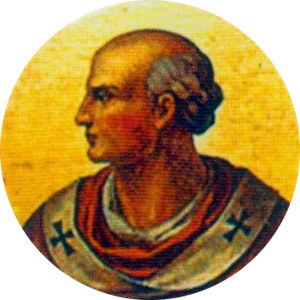
Benedict X, born Giovanni, was elected to succeed Pope Stephen IX on 5 April 1058, but was opposed by a rival faction that elected Nicholas II. He fled Rome on 24 January 1059 and is today generally regarded as an antipope.
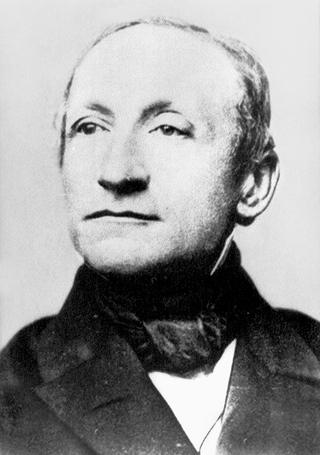
Philipp Jaffé was a German historian and philologist. The Schwersenz native, despite discrimination against his Jewish religion, was one of the most important German medievalists of the 19th century.
Bonizo of Sutri or Bonitho was a Bishop of Sutri and then of Piacenza in Central Italy, in the last quarter of the 11th century. He was an adherent of Gregory VII and an advocate of the reforming principles of that pope. He wrote three works of polemical history, detailing the struggles between civil and religious authorities. He was driven out of both of his dioceses, once by the emperor and once by opponents of Gregorian-style reform.

Ruthard was Archbishop of Mainz from 1089 to 1109, and a leading opponent of the Emperor Henry IV and his antipope Clement III. He spent nearly eight years in exile because of his opposition, and played a part in the successful revolt of Henry V against his father.
John of Crema was an Italian papal legate and cardinal. He was a close supporter of Pope Callistus II.
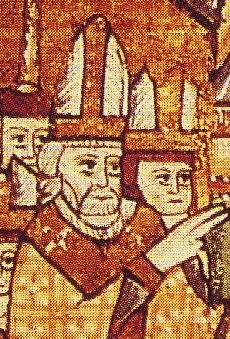
The 1088 papal election subsequent to the death of Pope Victor III in 1087 was held on 12 March 1088. Six cardinal-bishops, assisted by two lower-ranking cardinals, elected Cardinal-Bishop of Ostia Odon de Lagery as the new Pope. He assumed the name Urban II.
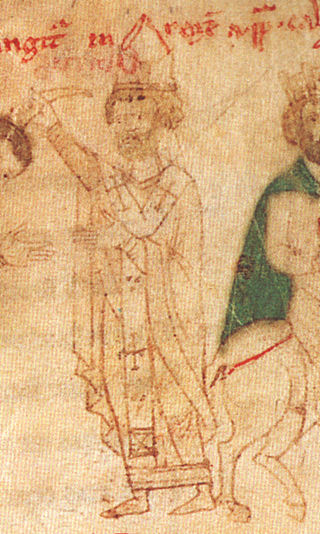
The 1119 papal election was, of all the elections currently considered legitimate by the Roman Catholic Church, the smallest papal election of the twelfth century.
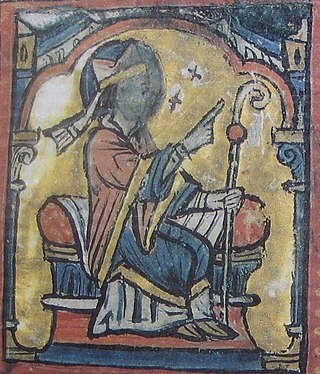
The December 1187 papal election was convoked after the death of Pope Gregory VIII. It resulted in the election of Cardinal Paolo Scolari, who took the name of Clement III.

The 1191 papal election took place after the death of Pope Clement III. Pope Clement, according to differing and irreconcilable reports, died in March 1191, in the last third of the month, on the 20th, the 25th, the 26th, the 28th, or perhaps 2 April or 4 April, or 10 April. The election was conducted during the march of King Henry VI and his army toward Rome. The 85-year-old Cardinal Giacinto Bobone, a member of the Orsini family, was chosen after some extreme reluctance. He took the name Celestine III. Pressed by the Romans, however, he agreed to negotiate with King Henry about his coronation as emperor and about the possession of the city of Tusculum. Celestine postponed his own consecration in order to buy time to negotiate. He was finally crowned on Easter Sunday, 14 April 1191.

The 1118 Papal Election was held to choose the successor for Pope Paschal II, who died in Rome on 21 January 1118, after an 18-year pontificate. Pope Gelasius II was elected as his successor. The election happened during the Investiture Controversy, a conflict between supporters of the Papacy and those of the Holy Roman Emperor. The election was held under the threat of possible violence due to the controversy. The Cardinal electors took refuge in the Benedictine monastery, S. Maria in Pallara, during the election. Within minutes of his election as pope, Gelasius II was attacked and imprisoned by the Frangipani faction, supporters of the Holy Roman Emperor. Gelasius managed to escape, but at the emperor's arrival with his army, he fled Rome and never returned.

The 1099 papal election following the death of Pope Urban II took place on 13 August 1099. Before his death, Urban had designated Cardinal Rainerius da Bieda as his successor. The cardinal-electors, with the consent of the lower Roman clergy, chose Rainerius, who, after a flight and over his considerable objections, accepted and took the name Paschal II. He was consecrated a bishop and crowned pope on the next day.
Vitalis of Albano was a Cardinal and bishop of Albano.
Roscemanno, O.S.B.Cas. was a Roman Catholic Cardinal and Deacon of San Giorgio in Velabro.
Petrus Pisanus was a Roman Catholic Cardinal. He began his career in papal service as a scriptor in the chancellery. He was appointed Deacon of San Giorgio in Velabro, and then promoted Cardinal-priest of Santa Susanna. He served briefly as papal legate in Corsica, before becoming a permanent member of the papal court. He participated in the papal elections of 1118, 1124, and 1130. In 1130, he chose to support the Obedience of Anacletus II rather than that of Innocent II. After Anacletus died in 1138, he joined the Obedience of Innocent II, and survived the purge of 1139.
Bonifacius was a Roman Catholic Cardinal and Cardinal-priest of the titulus of San Marco. In 1111, he was one of the cardinals captured by King Henry V at what was supposed to be his coronation, and was held prisoner near Rome along with the pope for sixty-one days. He was forced to subscribe to the oath taken by Pope Paschal II, according to the dictates of King Henry. He was then one of the cardinals who opposed the agreements struck by Paschal with Henry in the Lateran synod of 1112. He was not one of the cardinals who followed popes Gelasius, Calixtus, or Honorius on their travels. In the contested papal election of 1130, he supported Pope Anacletus II.
Divizo was a Roman Catholic Cardinal and Cardinal-priest of the titulus of Santi Silvestro e Martino ai Monti, originally called the titulus Equitii. In 1108, he was papal legate to Germany. He opposed the conciliatory policy of Pope Paschal II to the German King Henry in the Investiture controversy, was imprisoned with the pope and fifteen other cardinals, and forced to sign papal agreements. He then worked against them in the Roman synod of March 1112. After the synod, he was sent to Germany as a legate to Henry V, to work out a compromise. In the winter of 1121 he was promoted Cardinal-bishop of Tusculum (Frascati).
Desiderius was a Roman Catholic Cardinal, and Cardinal-priest of the titulus of S. Prassede in Rome.
Benedictus was a Roman Catholic Cardinal, and Cardinal-priest of the titulus of San Pietro in Vincoli in Rome, also called the titulus Eudoxiae.
Saxo de Anagnia was a Roman Catholic Cardinal, and Cardinal-priest of the titulus of S. Stefano al Monte Celio in Rome. He was a native of Anagni, and a member of the family of the Conti di Anagni. Dumas points out that there is no positive evidence of the family connection.

Ardicio de Rivoltela was a cardinal of the Roman Catholic Church. He was a native of Piadena (Platina), in the diocese of Cremona in Lombardy. The appellation "de Rivoltela" is mentioned only once, and its significance is unclear.
References
- ↑ Piazza and Anzoise (2019), "Teodorico, antipapa", Dizionario Biografico degli Italiani. Hüls, pp. 92–93. (in German)
- ↑ Philipp Jaffé; Wilhelm Wattenbach; Ernst Dümmler (1866). Bibliotheca rerum germanicarum: Monumenta moguntina (in Latin). Vol. III. Berlin: Weidmann. p. 377.: "Principio, de symoniaca heresi infamatus, a viris religiosis et quos ad vocationem auctoritas admittit multifarie super hoc impetitus, per Romanae aeclesiae cardinales Warinum, Anastasium et Adalmarium est vocatus. Et postea, cum venire nollet, ab episcopis Romanis Tiedrico Albanense et Ruopperhto Faventino, postremo etiam per Hugonem sacri palacii diaconum vocatus est.
- ↑ Philipp Jaffé; Wilhelm Wattenbach; Ernst Dümmler (1866). Bibliotheca rerum germanicarum: Monumenta moguntina. pp. 377–379.
- ↑ Jaffé; Wattenbach; Dümmler (1866). Bibliotheca rerum germanicarum: Monumenta moguntina. pp. 374–376.: "De cetero precamur et obsecramus, ut de collegio vestro, quos nostis idoneos, in Kalendis Decembris dirigere velitis, qui possint interesse conventui ecclesie, qui se in villa nostra ad honorem Dei colligere decrevit." His letter to the clergy and people of Halberstadt suggests that the bishop may have been supporting Henry and Clement: "Nulla vobis erit confusio immo gloria et honor, redire ad viam iustitie, a qua vos deduxit tortuosa semita sinistre." ('There will be no confusion for you, but actually glory and honor, to return to the way of justice, from which a tortuous path has led you astray.')
- ↑ Jaffé; Wattenbach; Dümmler (1866). Bibliotheca rerum germanicarum: Monumenta moguntina. p. 377.: "Principio, de symoniaca heresi infamatus, a viris religiosis et quos ad vocationem auctoritas admittit multifarie super hoc impetitus, per Romanae aeclesiae cardinales Warinum, Anastasium et Adalmarium est vocatus. Et postea, cum venire nollet, ab episcopis Romanis Tiedrico Albanense et Ruopperhto Faventino, postremo etiam per Hugonem sacri palacii diaconum vocatus est.
- ↑ Hüls, p. 93 with note 3. P. Kehr, Italia pontificia I (Berlin: Weidmann 1906), p. 61, no. 2.
- ↑ Jaffé, Regesta pontificum, pp. 701, 703.
- ↑ Pandulphus Pisanus, "Life of Paschal II," in: Watterich II, p. 4: "Miser GUibertus, iam non-papa, qui nunquam papa, dimissa Urbe, nec adhuc securus, in Castellum se proripuit, et hic terminus."
- ↑ The successor of his successor, Maginulf, also assumed the name Sylvester (IV).
- ↑ The statement that he was pope for three or four months is derived from a misreading of Pandulph Pisanus' "Life of Paschal II", where a reign of 105 days is actually assigned to Antipope Adalbert, Theodoric's successor. Watterich II, p. 4: "Alter post alterum duo statim eliguntur pape. Et unus quidem eodem, alter post centesimum quintum electionis suae diem a fidelibus captus, qui Albertus vocabatur, apud sanctum Laurentium Aversae retrudi, et qui Theodericus, apud sanctam Trinitatem in Cava heremiticam vitam addiscere, patrum iudicio adjudicati sunt."
- ↑ "Annales Romani", p. 477: "ibique monachus effectus est." Paul Guillaume (1877). Essai historique sur l'abbaye de Cava d'après des documents inédits (in French). Cava dei Tirreni: abbaye des R.R. Pères bénédictins. pp. 68–70.
- ↑ Watterich II, p. 4. Guillaume, p. 69, note 1.
- ↑ Imma Penn, 233. Michaele Morcaldi; Mauro Schiani; Sylvano De Stephano, eds. (1873). Codex diplomaticus cavensis (in Latin). Vol. Tomus primus. Naples: Petrus Piazzi. p. lxviii.
- ↑ J.N.D. Kelly and M.J. Walsh (2010), Oxford Dictionary of Popes, second edition (Oxford: OUP), p. 162.
- ↑ Jaffé, Regesta pontificum, p. 773, whose editors point out that Albertus would not have been elected by the Wibertines until after the death of their Pope Theoderic.